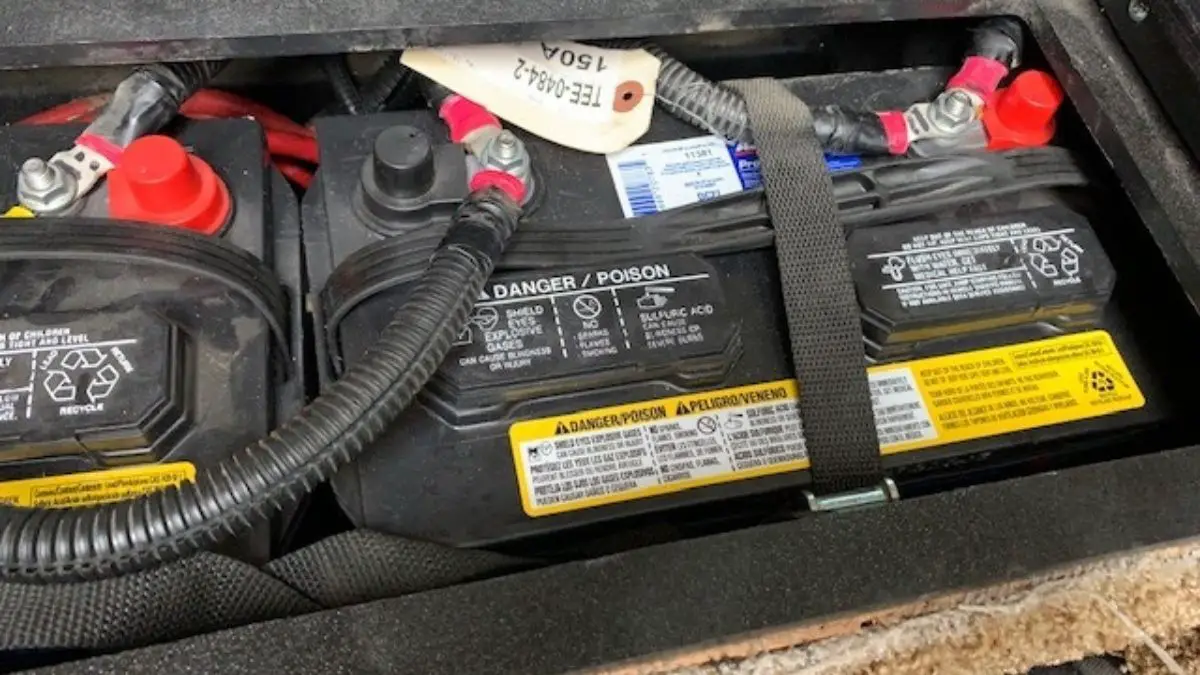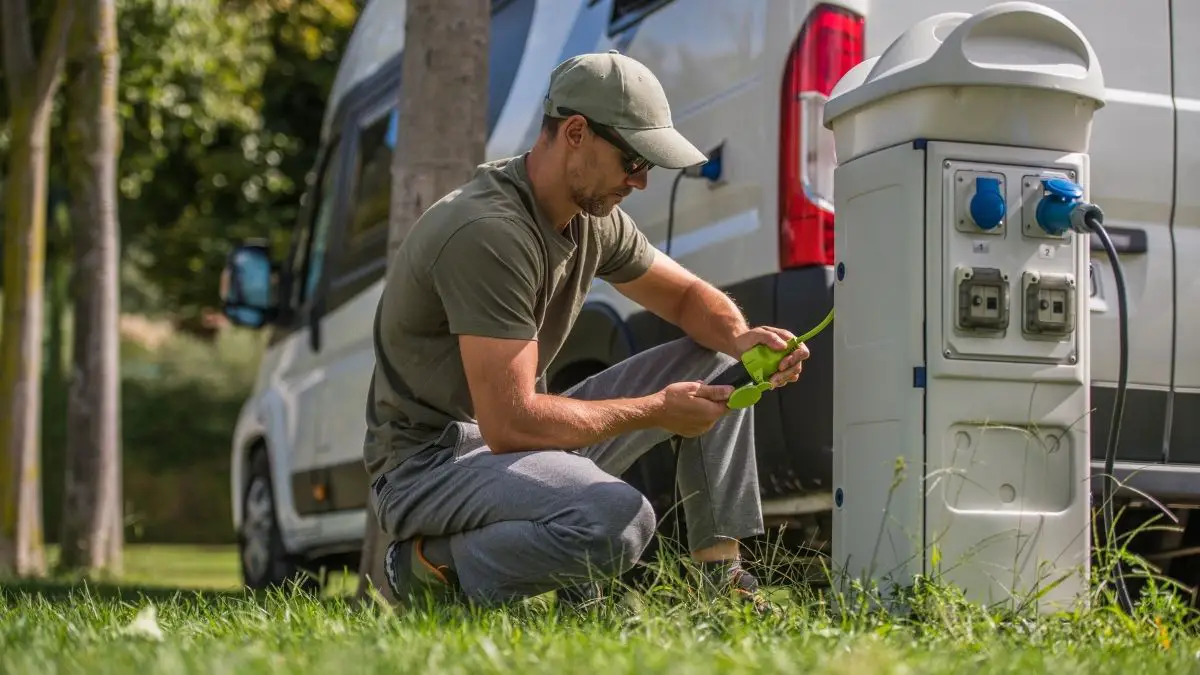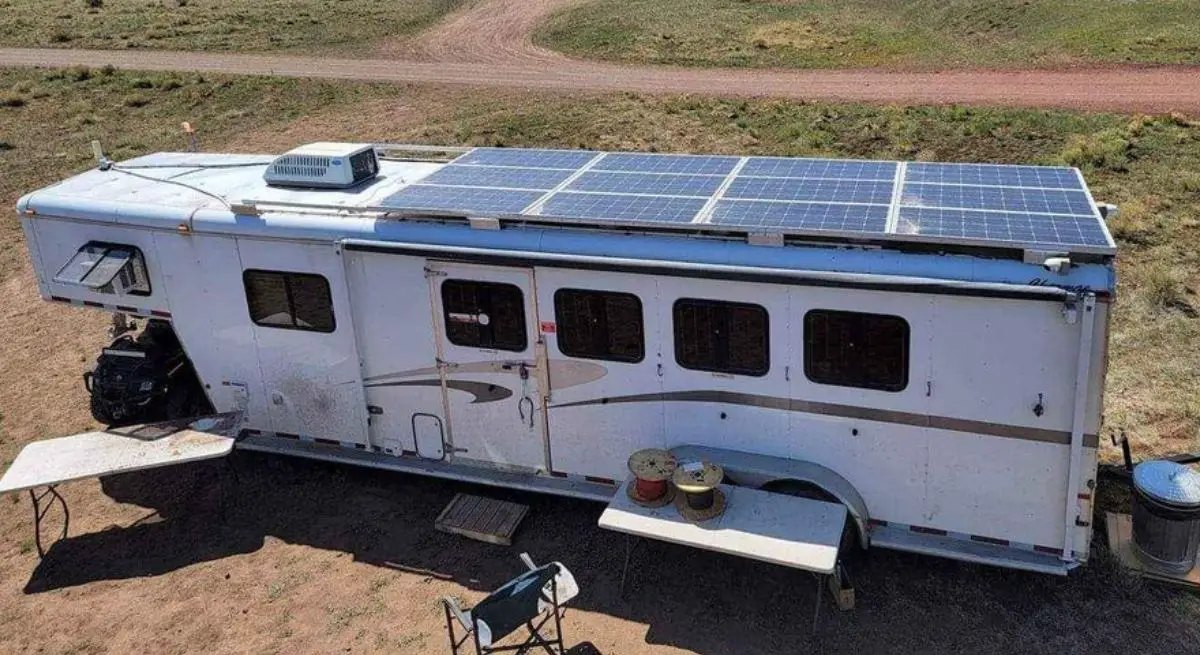Whether you’re looking to upgrade or replace your current RV batteries, or just looking to see how to get the most of the current one you have, it helps to have a general understanding of the three (3) most popular rechargeable batteries currently used for RVs based on their design which are (1a) Lead-acid flooded wet cell, (1b) Valve-regulated lead-acid (AGM), and (2) lithium ion batteries.
The different types of RV batteries are basically based on how they’re designed, from the electrolyte used and the cell composition to induce the electrochemical process, which I’ll explain in the next section. This knowledge will help with maintenance and storage so you could ensure your RV electrical DC system works* the way you need it.
In general, rechargeable batteries do not generate electricity, but actually stores it in an electrochemical process. It can charge and discharge energy in a reversible electrochemical reaction based on the different electrode materials and electrolytes, which you’ll see in the next section.
I wanted to explain how it works so you could understand and differentiate the different types of RV batteries, and navigate through the different labels so you can see what works best for what you need in your RV.*If you’re not familiar with your RV’s electrical system and/or would like to get a better grasp of it, I’ve written an article just on that HERE for reference.
Battery Terminology
To keep this part short, I’ve tabulated terms you can refer back to if ever any of the terms I mention later get confusing.
| Term | Definition |
|---|---|
| Amp-hours (Ah) | Amps x hours; Capacity of a battery |
| Capacity | The ratio of normalizing charge and discharge currents |
| Cylce / Cycle Durability | The number of charges and discharge cycles that determines the battery lifetime; is heavily dependent on the DOD and operating temperature of the battery |
| CCA | Cold Cranking Amps; Lead-acid batteries are measured in CCA. It’s the amount of current that a fully charged battery can deliver for 30 seconds at 0 degrees Fahrenheit while maintaining its voltage above 7.2 volts. Higher CCA rating = more capability to start an engine |
| MCA | Marine Cranking Amps; It’s the amount of current that a fully charged battery can deliver for 30 seconds at 32 degrees Fahrenheit instead of 0 degrees Fahrenheit |
| DOD | Depth of Discharge of a battery refers to how much you can safely discharge the battery without damaging it |
| Deep Cycle Battery | Produces a steady current of electricity (as compared to SLI batteries) and can be discharged up to 80%, have SOLID (not sponge) lead plates |
| SLI or Starting Battery | Starting, Lighting, Ignition batteries; Delivers short, high-current electrical currents used to start the engine |
| Hybrid / Dual-Purpose Batteries | Can be a mix of a starting battery and a deep-cycle battery |
Lead-Acid Batteries Tried And True For Your RV
Lead-acid batteries are the most commonly used RV batteries. It’s made of separate cells which has lead plates and a separator in between each cell. Each cell is filled with an electrolyte made out of sulfuric acid and water.
The chemical reaction between the positive lead dioxide plates and the negative pure lead plates charges them, so that the electrons flow from the negative to the positive plates when you switch on a device that runs on DC power. As the lead-acid battery discharges, the plates get coated in lead sulfate as the electrolyte solution dissolves, and the water content increases.
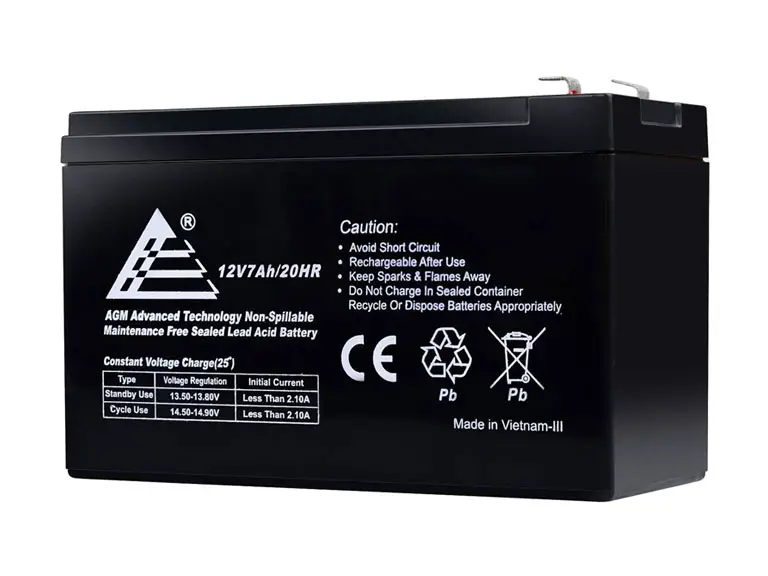
This water content makes your discharged lead-acid battery prone to freezing. At the same time, this electrochemical reaction also releases hydrogen and oxygen as a byproduct, which also increases when your battery is overcharged (which can explode if exposed to a spark or flame) – thus creating the need for this battery type to be kept in a well ventilated area.
Charging your lead-acid battery reverses this chemical process, and reverts the composition of the cell plates and electrolyte back to their original form. Similar to how I explained how an RV Converter works (HERE), lead-acid batteries have 3 charging stages: bulk, absorption and float.
Each stage will have its own traits that will differ for each rechargeable battery type used for RV.Lead-acid RV batteries is the cheapest option and good at tolerating overcharging. Some downsides to it is that it requires to be upright since there is a tendency for it to leak and it also doesn’t handle vibration well.
It also requires maintenance by inspecting and topping it off with distilled water. Lead acid batteries also have high self-discharging rate. And, depending on the manufacturer, lead acid batteries may need to get a topping charge every six months to prevent sulfation buildup (this happens when the DOD drops to < 80% or 12.4V).
AGM Batteries A Sealed Lead Acid
With the basic structure of the lead acid battery in mind, Absorbed Glass Mat (AGM) batteries uses a fine fiberglass mat to absorb the sulfuric acid electrolyte which makes it spill-proof, making it able to be mounted in any position and safe to be in low ventilated areas, it stands well in low temperatures and maintenance free.
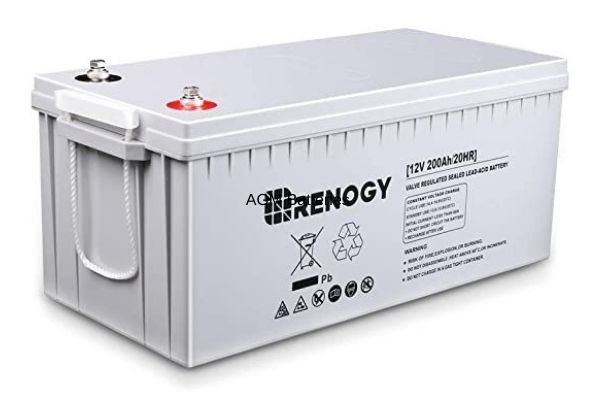
AGM can deliver high currents as needed due to the very low internal resistance even when deep cycled. Comparing AGM batteries with the flooded battery type, AGM charges up to five (5) times faster and offers a depth-of-discharge of 80 percent and can still charge in freezing (below 0°C with less efficiency).
It also has a better cycle life, vibration resistance, less prone to sulfation, has a long service life, less prone to self-discharging which makes it alright in storage before needing charging. It can also be wired in series, and used as a starting battery. But, in contrast, it requires a specific charger, is more sensitive to overcharging, and more expensive than flooded cell batteries, but still cheaper than the gel cell batteries.
When AGM batteries get overcharged, gas builds up within the cell, and once it exceeds 1.5 PSI, the valve(s) will open and to let the gas escape, thus the term “valve regulated,” but if this happens on a regular basis, it will dry out and cause the battery to fail.
Gel Cell Batteries For Your RV
Although they’re very similar to AGM batteries, gel cell batteries uses silica in the electrolyte creating a gel-like substance. Similar to the AGM battery, it’s valve regulated, where the gel allows little to low maintenance, no leaks or fumes and is resistant to vibration.
Some of the drawbacks though of this battery type is the price, it’s slow charging rate and cycles, and requires a specific charger for its charging profile. Because it’s also sensitive to overcharging, the damage is irreversible since it causes voids in the electrolyte.
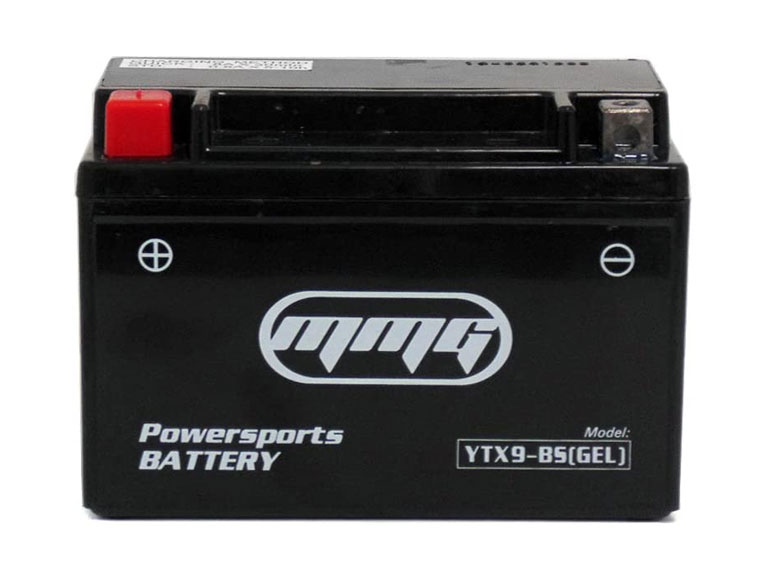
Lithium Iron Batteries Hold More Power For Your RV
Since Lithium iron (LiFePO4) batteries do not have the lead-acid plates, it naturally makes them lighter than both the AGMs or Flooded Wet-cell types. Plus, because of the higher depth-of-discharge of 80-90%, it means you’ll get to use more of the stored energy, so you’ll need less batteries versus lead-acid types which will make your lithium battery bank require less volume and weight on your RV.
It’s also good for areas with poor ventilation, has a longer lifespan compared to AGMs, has up to a15% higher charging efficiency and is maintenance free. One of the downsides of lithium iron batteries is often the upfront cost and that they can’t absorb overcharge since the overcharge will cause plating of the metallic lithium.
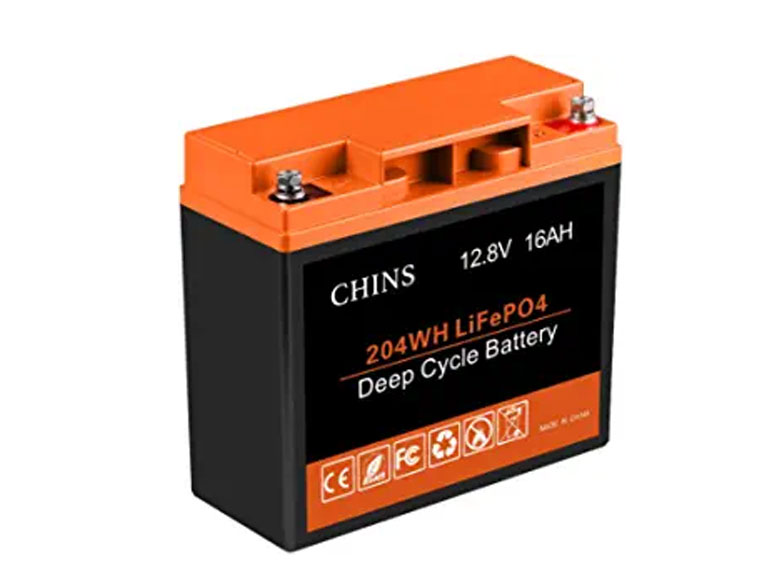
Some manufacturers of Lithium iron batteries have built-in Battery Management System (BMS) like the Battle Born LiFePO4 Deep Cycle Battery which regulates the power discharge and charging (shut-off system to prevent overcharging) that will protect the cells from unsafe operating conditions.
If you already have Lithium ion batteries, but it doesn’t have its own BMS, it could be worth your while to get one so that you could prolong its life.
Other Rechargeable Battery Types For RVs
I won’t cover the other types of rechargeable batteries, like Nickel-Cadmium (NiCd) and Nickel-Metal Hydride (NiMH) batteries since they’re not usually used for RVs due to the cost, weight, size, toxicity (Cadmium is toxic), discharge current, etc. There are also other types of Lithium-ion batteries, which I won’t cover since they have different applications and just focus on the one used for RVs.
Tesla batteries can also be used for RVs, but it’s currently not a practical one due to the price and you’ll also need to install a 24v system with a converter to reduce the final electrical output to 12v (this also requires finding an RV Technician who specializes in Tesla RV battery bank installation).
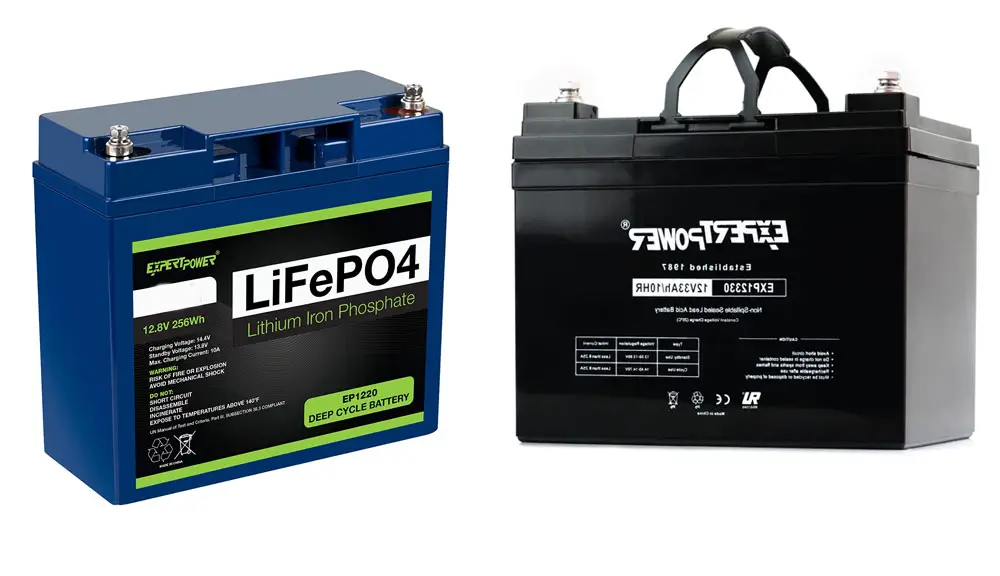
What Type Of Battery Is Best For RVs?
There is no clear cut answer for this question since what’s best for you will depend on your budget, and how you’ll be using the battery.
If budget is not a factor then lithium iron (LiFePO4) are the premium choice for RV batteries. Batteries from Battle Born, Renogy or expert power are all great choices for lithium iron batteries.
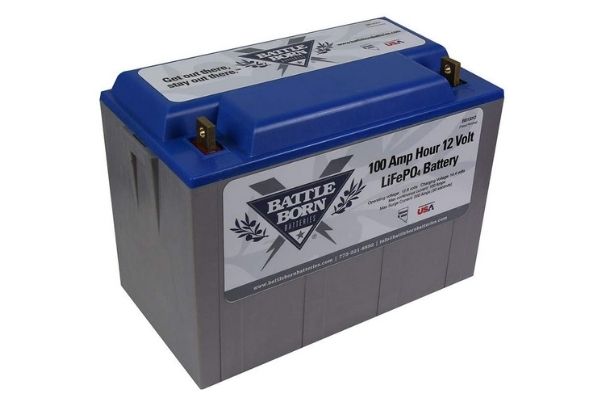
But in general, it’s about getting a deep-cycle battery designed for RV use as they’ll usually last longer (look for those with CCA instead of MCA markings), preferably with little to no maintenance, and can be operated within the ambient temperature your RV is in or will be traveling to.
The reason why deep-cycle batteries are the way to go is because they’re designed to provide a steady rate of power over a long period of time, as compared to your regular car batteries that are designed to deliver a burst of energy for short periods of time.
In terms of battery capacity, avoid those with MCA markings and look for the CCA capacity that’s right for your RV. You’ll want the CCA markings because you’ll get a maintaining voltage above 7.2v for 30 seconds at 0°F (-17°C) versus MCA which will do the same, but at 32°F (0°C).
Because battery manufacturer’s also have hybrid batteries that are a combination of deep-cycle and starter batteries, and have different battery capacities, it pays to know why the labels are different. I’ve summarized them for you to see how each one differs, also including the labels that can commonly come with their marketing. Do note that some of the values are average ranges, and can vary because of the different manufacturers, the operating conditions the batteries can be subjected to.
RV Battery Comparison: Choosing The Best For Your RV
As a general guide, you can always check the label on the top most part of the battery to see what type it is. If in doubt, you can always consult your RV Technician or the manufacturer for more specifications specific to the battery you have/want to purchase.
| Lead Acid (Deep Cycle) | Lead Acid (Deep Cycle) | Lead Acid (Deep Cycle) | Lead Acid (Deep Cycle) | Lithium-Ion | |
|---|---|---|---|---|---|
| Flooded Wet-Cell | Flooded Wet-Cell | Valve-Regulated Lead Acid (VRLA) | Valve-Regulated Lead Acid (VRLA) | LiFePO4 | |
| (Regular) Deep Cycle | Maintenance Free Type | Absorbed Glass Mat (AGM) | Get Cell | LiFePO4 | |
| Other marketing ideas | Liquid lead acid, wet cells | Will have “sealed” on the label, Sealed Lead Acid (SLA) battery | VRLA, AGM, Sealed Regulated Valve, Dry Cell, Non-Spillable, Valve Regulated | Get-Filled | Lithium Batteries |
| Battery cap description | Has removable tops | Sealed tops | Have flat tops except for positive and negative terminals | Have flat tops except for positive and negative terminals | NA |
| Maintenance | Add distilled water, as needed | Low to none | Low to none | Low to none | Low to none |
| Cycle Durability | <350 | 200 – 300 | 500 – 1200 | 500 – 1200 | 2000 – 5000 |
| Lifespan (years) | 2 – 4* | 3 – 5* | 6 – 10* | 6 – 10* | 10 – 20* |
| Ventilation | Required | Required | Required (even if sealed, if it’s overcharged or at high temperature, it will release Hydrogen and Oxygen | Required (even if sealed, if it’s overcharged or at high temperature, it will release Hydrogen and Oxygen | good for areas with no or poor ventilation |
| Weight (12V) | 60 lbs (27 kg) | 60 lbs (27 kg) | 66 lbs (30kg) | 66 lbs (30kg) | 31 lbs (14kg) |
| Absorption Voltage Range | 14.4 – 14.9V | 14.2 – 14.7V | 14.4 – 15.0V | 14.0 – 14.2V | 14.0 – 14.8V |
| Float Voltage | 13.1 – 13.4V | 13.1 – 13.4V | 13.2 – 13.8V | 13.1 – 13.3V | 13.2 – 13.8V |
| Charging Efficiency | >90% if the battery is a half charge or fewer drops to 80% if >80% charges | >90% if the battery is a half charge or fewer drops to 80% if >80% charges | >85% – 90% (Up to 5x faster than flooded) | >85% – 90% (Up to 5x faster than flooded) | 80 – 90% (up to 97-99% another references) |
| Deep of Discharge | Down to 50% | Down to 50% | Down to 80% | Down to 80% | 80 – 100 % depending on the brand |
| Cost (12V) | $ | $ | $$ | $$$ | $$$$ USD 200 – 2999 |
What’s The Difference Between Deep Cycle And Marine Batteries?
Because the terms “marine” and “deep-cycle” batteries are often interchanged, or even combined, some of them are constructed similar to those used for RV batteries and can be true deep cycle batteries or a combination of both.
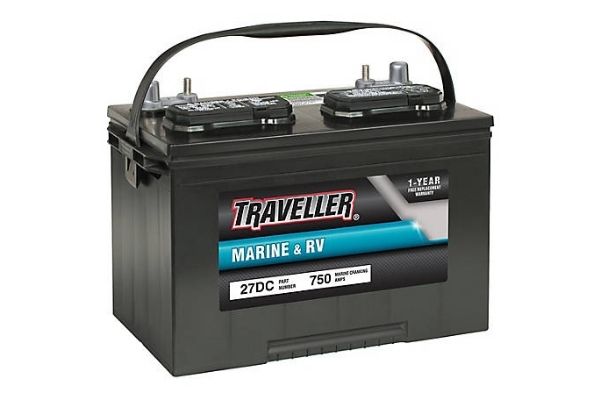
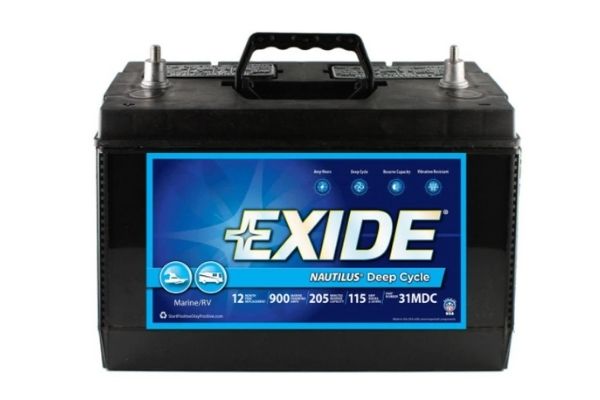
This is why it’s important to know the labels, so if you plan to get one even if it’s tagged as a “marine” battery, look for those with CCA markings and pick one with the capacity (measured in Amp Hours) you need.
How Do I Choose The Right RV Battery?
Things to consider:-
- Cost
- Amp-hour rating / Watt-hours
- Remote maintenance
- Capacity, life, long-term cost (lifetime cost)
- Size and weight (lead acid vs lithium ion battery)
- Warranty
I had to mention remote maintenance, because if you’re the type that prefers boondocking in remote places, and are tech savvy enough to ensure your batteries are top condition.
How Many Batteries Do I Need For My RV?
The answer to this question will heavily depend on
- Your RV camping style (do you prefer boondocking? Or do you prefer campgrounds? Are you living in it long-term? Or do you just use your RV occasionally?)
- How efficient and how much power your RV appliances and electrical system needs
- How you also use the equipment onboard? For example, do you plan to run your air conditioner on for 8hours on batteries?
- How much is your budget, and how much space you have on-board for all the batteries, and if ever, if you have solar panels
- Analyze the average depth of discharge for your current battery bank & the average temperature your batteries will be exposed to (traveling or boondocking)
- Size and efficiency of your inverter to be able to support appliances that have a high start-up wattage
- How much power needed as backup? (Depends if you prefer boondocking for long times)
- If you have a solar power setup.
Having a Battery Monitoring System (BMS) isn’t required, but it makes it easier for you to check the power that you use and how much power you have in your batteries. If you want to compute how much power your appliances and electronics your RV requires, I wrote a section on how to do just that in the article I wrote on How Your RV Electricals Work (HERE).
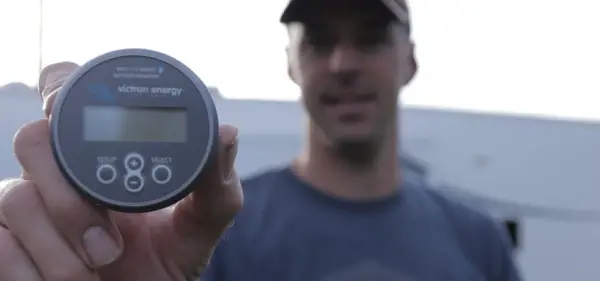
How Long Will My RV Battery Last While Boondocking?
If you have a fully charged 12V battery, with a conservative use of electricity for your lights, water pump, and you’re running your other applicable appliances on propane, your battery could last 2-3 days (or more).
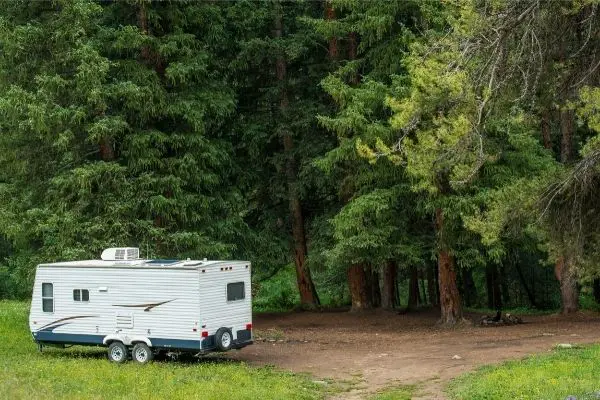
What’s the Difference Having Two 6V VS Having Just One 12V RV Battery?
Having two (2) 6v batteries wired in a series circuit (creating a 12v battery) can sometimes be better than using a single 12v battery because of the longer battery life, and a deeper discharge time. One of the downsides of having two (2) 6v batteries instead of just one is the space it consumes.
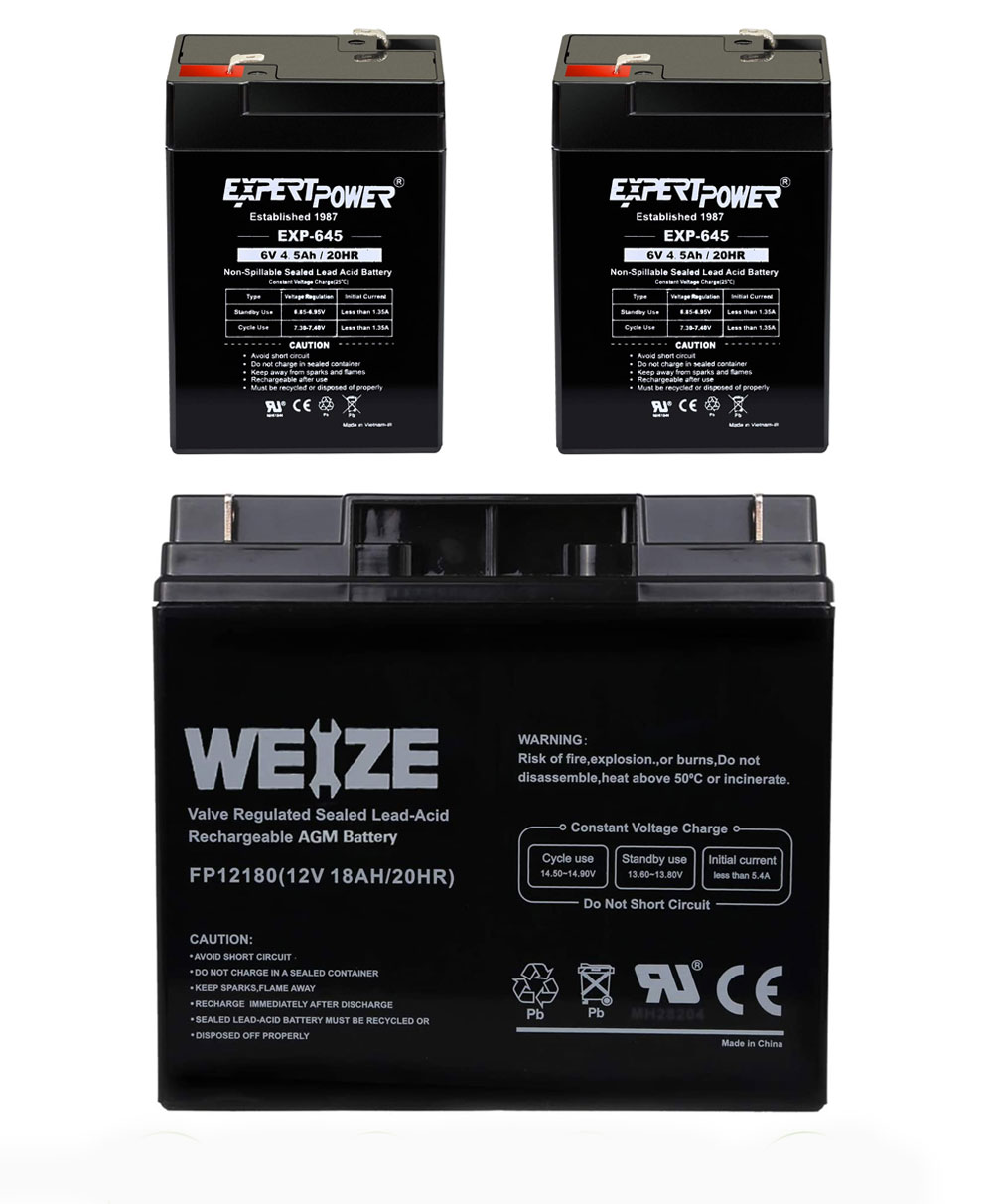
How Long Should RV Batteries Last?
Battery life is often measured by the charging and discharging cycle. But do note, as a general guideline, according to Battery University, a rechargeable battery’s life will get cut in half with ever 8°C (15°F) rise in temperature.
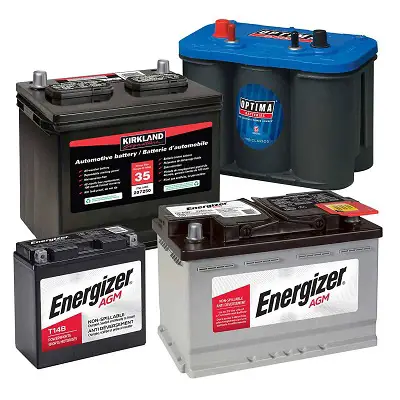
So for a VRLA battery, if it’s operated in 25°C (77°F), it can last for around ten (10) years, but if it’s operated in 33°C (92°F), the same battery will only last for five (5) years. I’ve listed in the RV Battery Comparison table the average ranges of each battery type, but as mentioned it’s highly dependent on how you use your batteries, the conditions you’re in and the maintenance and care.
How Long Do I Charge My Batteries?
(if RV hasn’t been used in a while)
Determining how long to charge your batteries will be based on:-
- The amp hours of your battery and how much has been used
- The charging rate of your converter (on the charger itself)
- Divide the amp hours by the charging rate
- Double the charging time to allow the battery to accept the absorption charge
Other factors that will affect how long the charging time will be are:-
- If you’re hooked up to a pedestal service, generator, or have a solar panel setup (and knowing how much sun you’ll get), it will automatically charge your 12v batteries
- how many batteries you have
- what type of batteries you have (charging stages)
Charging your batteries also takes some time to charge, especially in the different types and charging stages. Your bulk mode converter charger will try to squeeze in as much juice as fast as possible, but it doesn’t mean it will be immediately full since there will be still space in the battery.
One of the interesting things about lead acid batteries is that it will be fully charged at 12.6v, but half full at 12.2v, but it will be considered dead at 11.9v which can be confusing since the depth of discharge, specifically for lead acid batteries, should only be down to 50%.
Let’s say you’re going to be boondocking for a long weekend, it could be good to plug in your RV/batteries for around 1 week, and use them conservatively. As a backup, you can also use solar or a generator to recharge your batteries. The time to charge on these systems will also differ.
Why Do RV Batteries Need To Be Vented?
Hydrogen and water are by-products of the chemical reaction can explode if exposed to a spark or a flame. This is applicable to some lead-acid and VRLA batteries since overcharging, lack of air circulation, and temperature can influence this reaction.
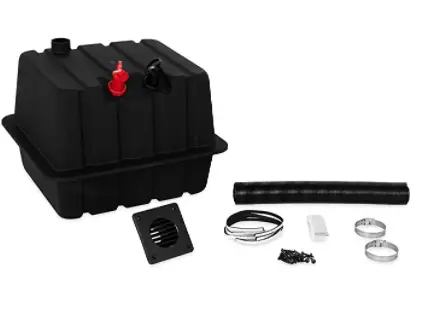
There are automatic thermostat regulated fan setups that can be installed in the cabinet/housing are of your RV battery bank, so it can automatically switch on to improve the temperature and air flow. These fans can also be connected to a centralized temperature controller panel like the non-programmable Heagstat H701 or the programmable Orbit 83521, or Dometic Duo Therm Comfort Control 2 and programmed so the fan(s) can turn on when it reaches the temperature you set it to.
RV Battery Maintenance: What Needs To Be Done?
There are many quick tips to maintain and help extend the life of your batteries, :
- Using a digital voltmeter can help measure the voltage of your battery since it shows the DOD and when it needs to be recharged. There are also digital battery monitors available with different price ranges like Baylite DC LCD Display, Renogy 500A Battery Monitor and Victron Energy BMV-712 Smart Battery Monitor that can make life a little bit easier in terms of monitoring your battery bank.
- Make sure that your battery does not discharge below its recommended DOD. For lead acid batteries, sulfation can occur if it drops below 12.4v or 80% DOD. Discharging your battery down to just 50%, compared to 80% everyday, will make it last longer.
- Do not overcharge your batteries. For this to happen, it would be good to immediately disconnect the charger once your batteries are fully charged, or have a smart battery charger, some of which can immediately cut off the charge.
- Make sure that it’s operating in a suitable temperature.
- For lead-acid batteries, adding distilled water is best since regular tap water may have other minerals that can contribute to the sulfation.
Conclusion
Regardless of the price, the best rechargeable battery for your RV doesn’t have to be the most expensive one since it will really be dependent on what you need for your RV. Understanding how the different batteries work will definitely make things easier, and help get the most of what you already have.

